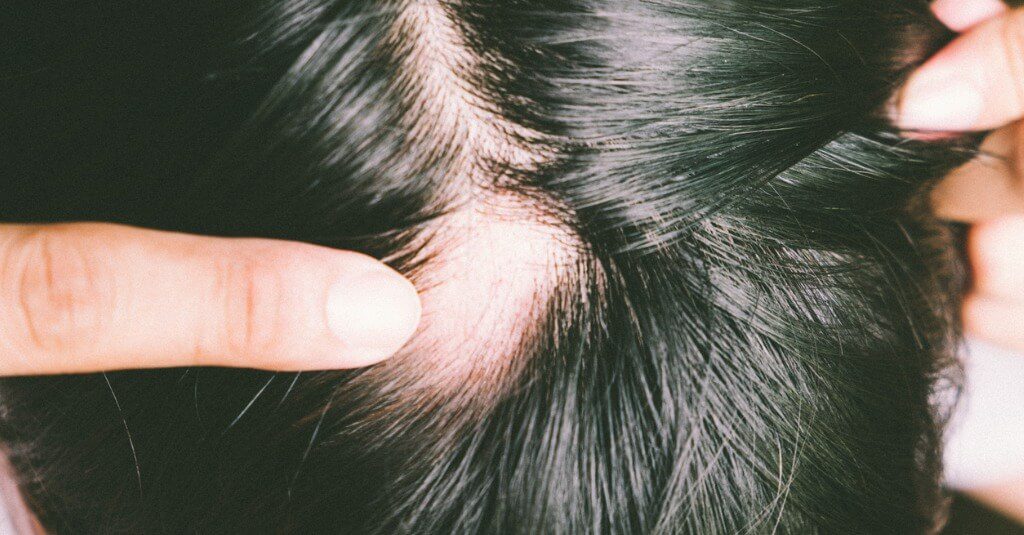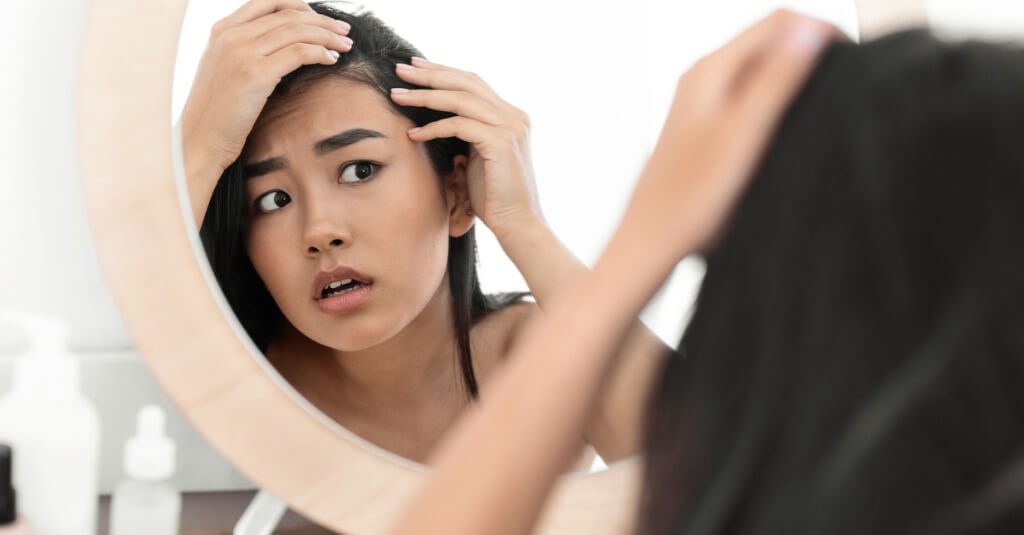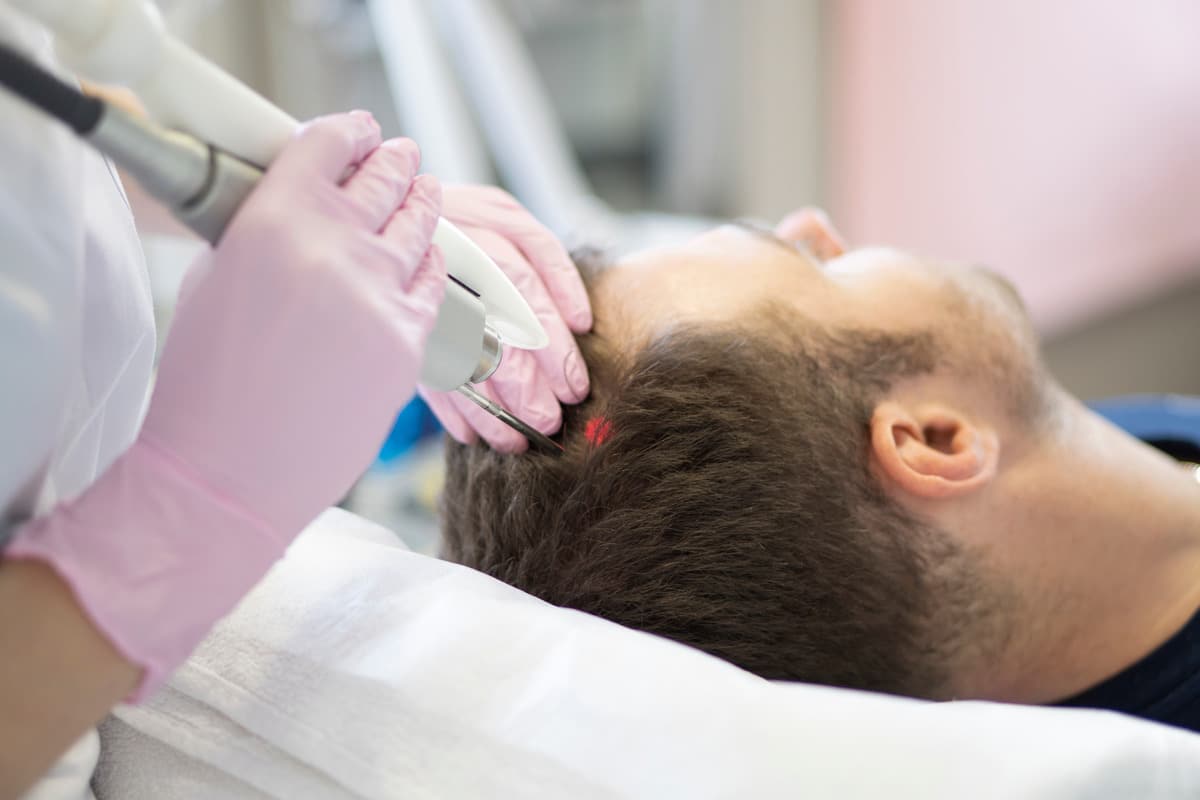A Guide to the Different Types of Alopecia

Alopecia, the medical term for hair loss, is an umbrella term encompassing various types of hair thinning. To effectively regrow your hair, it’s essential to understand the different types of alopecia.
Each type has unique causes and a distinct set of symptoms. Some are related to genetics, while others stem from psychological reasons. Some respond better to medications, while others resolve with laser therapy.
Here, we will look closer at various types of alopecia to help you understand your condition better and find the best treatment to restore your hair.
Androgenetic Alopecia
Androgenetic alopecia, also known as male or female pattern baldness, is the most common form of hair loss. It’s characterized by a gradual thinning of hair on the scalp and affects over 50 million men and 30 million women in the US.
The underlying causes of androgenetic alopecia are thought to include:
- Genetics and having a family history of baldness
- An imbalance of hormones, particularly androgens
- Age (most people start noticing signs in their 30s and 40s)
- Lifestyle factors such as stress, poor diet, and certain medications
Common symptoms of androgenetic alopecia include:
- Receding hairline
- Bald spots on the scalp
- M shape hair loss in men
- Thinning hair on the top of the head
- Hair loss resulting in a wider part line in women
- Noticeable hair shedding on the pillow or in the shower
Alopecia Areata
Another one of the more common different types of alopecia is alopecia areata. This is an autoimmune condition that causes hair loss and baldness in patches.
This type of hair loss can affect different areas of the body. More severe forms include alopecia totalis, causing complete hair loss on the scalp and face, and alopecia universalis, causing complete hair loss everywhere on your body. Those who live with alopecia areata might experience sudden hair loss in oval patches on the scalp or notice hair falling from eyebrows, eyelashes, or bearded areas.
Doctors are not completely certain of the causes of alopecia areata, however it is thought to be related to both genetics and environmental conditions. Factors that increase the likelihood of developing alopecia areata include:
- Genetic predisposition and a family history of autoimmune disorders, including close blood relatives specifically with alopecia areata
- Other autoimmune conditions, for example psoriasis, vitiligo, thyroid disease, lupus, and autoimmune diabetes mellitus.
- Other specific conditions including asthma, hay fever, and atopic dermatitis
Different types of alopecia areata symptoms can include:
- Rapid hair loss forming patches of baldness on your scalp, eyebrows, or facial hair
- Hair loss on other areas of the body
- Fingernails and toenails can become brittle and pitted
- Sudden hair loss in small, round patches on the scalp
Telogen Effluvium
Another relatively common type of hair loss is telogen effluvium, which causes rapid hair loss on the scalp, and is often triggered by stress. The hair loss results from your hair follicles prematurely entering the telogen, or shedding phase, one of the four phases of hair growth.
The different causes of this type of alopecia can include:
- Severe physical or emotional stress caused by a traumatic event or other stressful situation
- Hormonal changes due to pregnancy, menopause, or thyroid disorders
- Nutritional deficiencies and inadequate intake of essential nutrients such as vitamin D
- Certain medications
Symptoms of telogen effluvium include:
- Noticeable thinning of hair on the scalp
- Increased hair shedding during brushing or washing
- Hair loss that occurs suddenly or within a few months after a triggering event
Traction Alopecia
Traction alopecia is a type of hair loss that occurs when the follicles are mechanically stressed. People who repeatedly pull on their hair or apply tension to the follicles may experience this type of alopecia.
The most common causes of this type of hair loss include:
- Styling practices such as:
- Hair extensions
- Tight buns and ponytails
- Accessories that pull on the hair, like:
- Clips
- Headbands
Symptoms of traction alopecia include:
- Broken hair at the roots
- Hair thinning along the hairline, temples, or crown area
- Small bumps or sores on the scalp and along the hairline
- Visible redness and itching on the scalp in the affected areas
Scarring Alopecia
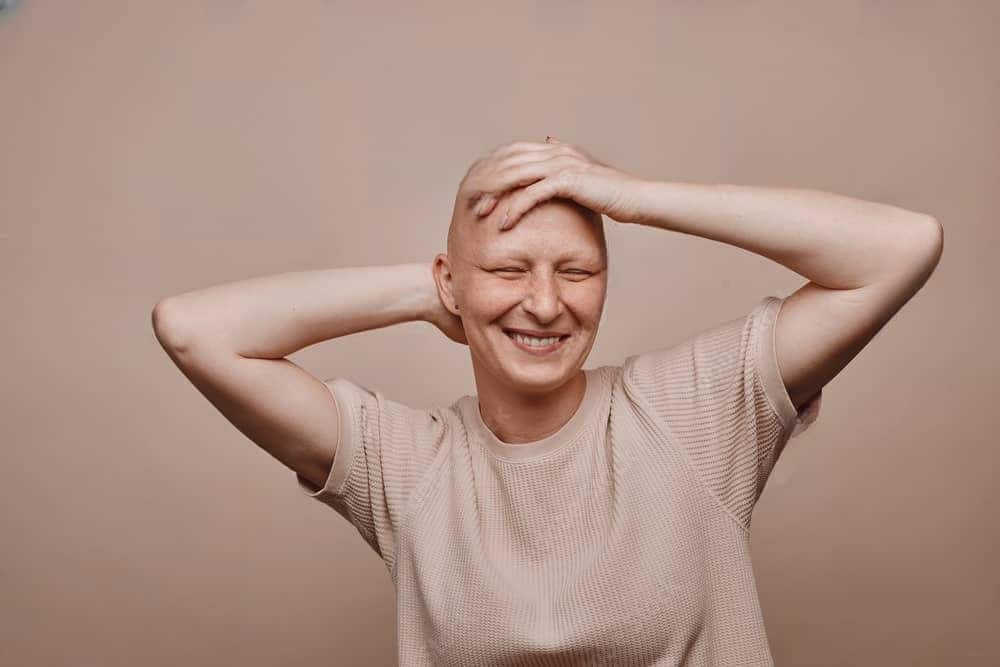 The different types of alopecia we discussed above are all non-scarring. There is another category of alopecias referred to as scarring alopecia, that affects 7% of those with baldness. Scarring alopecias are associated with damage to the skin that also destroys the hair follicles
The different types of alopecia we discussed above are all non-scarring. There is another category of alopecias referred to as scarring alopecia, that affects 7% of those with baldness. Scarring alopecias are associated with damage to the skin that also destroys the hair follicles
Scarring alopecias can be further divided into primary and secondary types, each with unique causes and characteristics.
Primary Scarring Alopecia
Primary types of scarring hair loss typically occur from inflammatory or autoimmune disorders that damage the follicles.
The most common types of primary scarring alopecia include the following:
Central Centrifugal Cicatricial Alopecia
Central centrifugal cicatricial alopecia (CCCA) is a common type of scarring alopecia that predominantly affects women of African descent. CCCA typically starts at the crown of the head and spreads outward.
The underlying causes of CCCA may include:
- Genetic predispositions
- Traumatic hairstyling practices
- Chemical damage from dyes and relaxers
Symptoms of CCCA include:
- Scalp tenderness or soreness
- Scarring at the site of hair loss
- Hair loss that starts at the center of the scalp and spreads outward
Chronic Cutaneous Lupus Erythematosus
Another type of alopecia different from the non-scarring varieties is chronic cutaneous lupus erythematosus (CCLE). This type of hair loss is associated with the autoimmune disorder, lupus, and is more common among women.
The causes of CCLE include:
- UV exposure
- Genetic predisposition
- Autoimmune response attacking hair follicles
Symptoms of CCLE include:
- Scalp lesions
- Patchy hair loss with scaling on the scalp
- Itching or burning sensation on the affected area
- Skin rashes, discoloration, and sensitivity to the sun
Folliculitis Decalvans
Folliculitis decalvans is an inflammatory type of hair loss caused by an infection. Those infected by the Staphylococcus aureus bacteria may be experiencing this ongoing form of hair loss.
The different causes of this type of alopecia may include:
- Immune system dysfunction
- Bacterial or fungal infections of the follicles
Symptoms of folliculitis decalvans include:
- Hair loss in patches
- Itching in affected areas
- Painful pustules on the scalp
Lichen Planopilaris
The most common type of primary scarring alopecia is lichen planopilaris (LPP), accounting for 10% of the cases. LPP is an inflammatory condition and is more prevalent in women over 50.
Causes of LPP types of hair loss include:
- Genetic predisposition
- Autoimmune response triggered by stress or trauma
Symptoms of LPP include:
- Itching and irritation on the scalp
- Progressive hair loss with scaly patches
- Permanent hair follicle destruction and scarring
Secondary Scarring Alopecia
Secondary forms are different from the primary types of scarring alopecia. This type is typically the result of hair follicle destruction by an external force or an underlying medical condition.
The causes of secondary scarring alopecia can be:
- Traumatic injuries such as:
- Burns
- Tumors
- Infections
- Radiation therapy
Symptoms of secondary scarring alopecia include:
- Scarring at the site of hair loss
- Hair loss in patches or all over the scalp
- Pain, itching, or tenderness on the scalp
Treatments for Different Types of Hair Loss
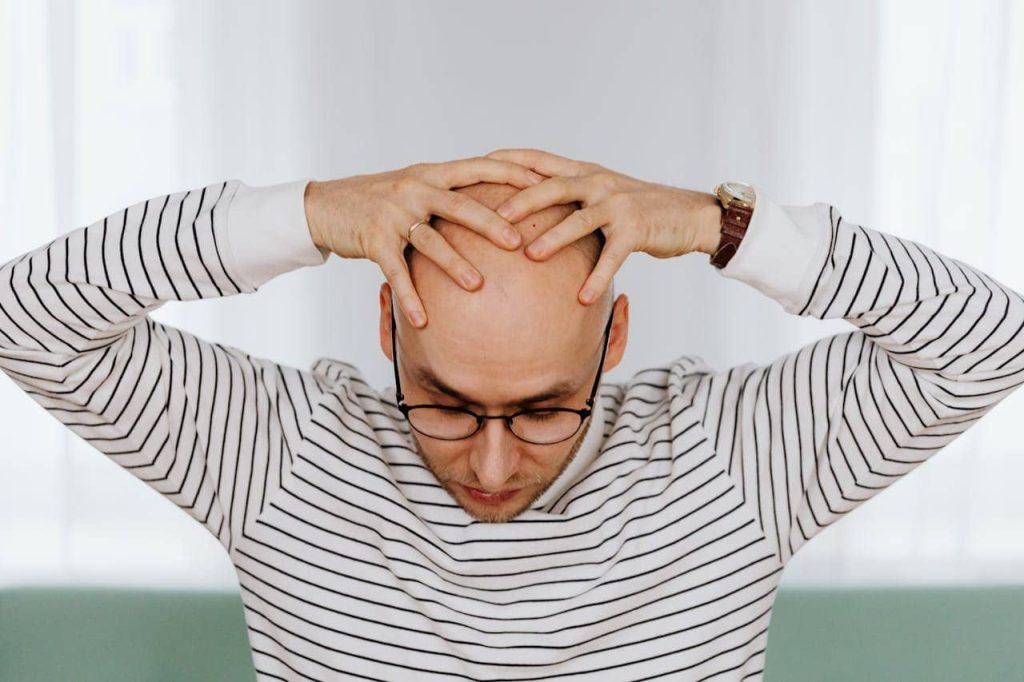
The following treatments are proven to work for pattern hair loss.
While some may also help with other hair loss conditions, it’s essential to note that different types of alopecia may require alternative approaches. A dermatologist or hair loss specialist can assess your situation and recommend the most suitable treatment plan.
Here’s a closer look at some of the most effective treatments available.
Minoxidil
Minoxidil is a topical solution or foam clinically proven to treat androgenic alopecia, a common type of hair loss. It works by improving blood flow to hair follicles, stimulating dormant ones, and extending the growth phase of hair.
This treatment is most effective for androgenic alopecia (male or female pattern baldness). However, it’s less effective for other types of hair loss, such as scarring alopecia or hair thinning caused by medical conditions.
Minoxidil is safe for most users, but mild irritation, dryness, or temporary shedding may occur as follicles adjust. Always follow directions and consult a dermatologist for concerns.
You’ll start seeing results in 3-6 months, with continued improvement over a year. Regular use is key, as stopping can reverse gains. Minoxidil isn’t a permanent cure, but it’s a reliable option for ongoing hair health.
Finasteride
Finasteride is an FDA-approved oral medication that treats androgenic alopecia by blocking dihydrotestosterone (DHT), a hormone responsible for shrinking hair follicles. It’s not effective for different types of alopecia. Finasteride works best for those with male pattern baldness.
Unlike minoxidil, which promotes blood flow, finasteride targets the hormonal cause of hair loss. Used together, they offer a comprehensive approach to hair restoration.
Results with finasteride take 3-6 months, but consistent use can slow or stop hair loss long-term. It’s not a cure, but it helps preserve and thicken existing hair.
Finasteride isn’t suitable for everyone. Side effects, like reduced libido or mild hormonal changes, are rare but possible. It’s designed for men and not typically recommended for women, particularly those who are pregnant or planning pregnancy.
Always consult a doctor before starting treatment.
Low-Level Laser Therapy (LLLT)
Low-Level Laser Therapy (LLLT) uses FDA-approved light technology to stimulate hair follicles and improve blood flow to the scalp, promoting healthier, thicker hair. It’s effective for androgenic alopecia and other early-stage types of hair loss in men and women.
LLLT is ideal for individuals experiencing mild to moderate hair thinning. It’s safe, non-invasive, and can complement other treatments like minoxidil or finasteride for enhanced results.
You’ll typically see improvements within 4-6 months of consistent use, with optimal outcomes over a year. LLLT works best when started early in the hair loss process.
LLLT has minimal risks, with no known serious adverse side effects. At-home devices like laser caps or combs make it convenient, offering a versatile, drug-free option to restore confidence and manage hair loss effectively.
Hair Transplant Surgery
Hair transplant surgery is a permanent solution for hair loss, moving healthy follicles from donor areas to balding spots. It’s ideal for different types of alopecia, including androgenic alopecia and some scarring alopecias, but less effective for others.
Good candidates have stable hair loss, sufficient donor hair, and realistic expectations. While results are permanent, future hair thinning may require additional care.
Transplants are highly successful, with natural-looking results visible within 6-12 months. A single procedure can provide lifelong improvement when paired with maintenance treatments.
Recovery takes 1-2 weeks, with mild swelling or redness possible. Risks, like infection or scarring, are rare but manageable with proper care.
Restore Your Natural Hair With LaserCap
By recognizing the different types of alopecia, you can choose the best treatment and take proactive steps toward restoring your hair. If you’re dealing with androgenetic alopecia, you can start restoring your natural hair today with LaserCap.
LaserCap is an FDA-cleared LLLT device clinically proven to fight male and female pattern hair loss. You can place this convenient device inside your favorite cap and wear it discreetly at home or on the go.
LaserCap’s prescription-strength light energy stimulates sluggish hair follicles and increases blood flow to the scalp, giving you a fuller head of hair in just four to six months. Don’t let hair loss hold you back any longer.
Get your LaserCap today and start your journey toward thicker, healthier hair!

